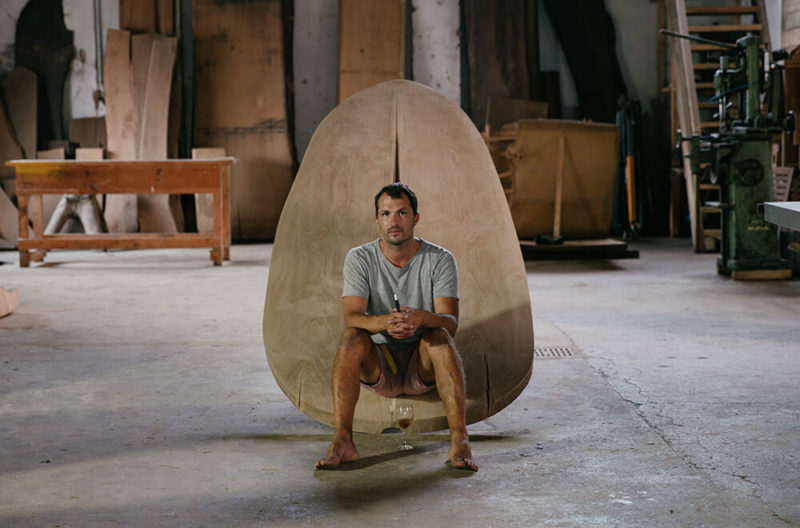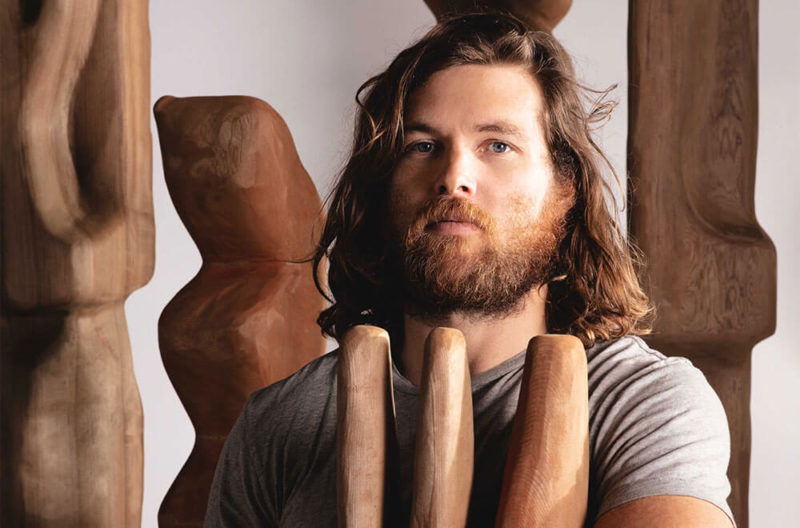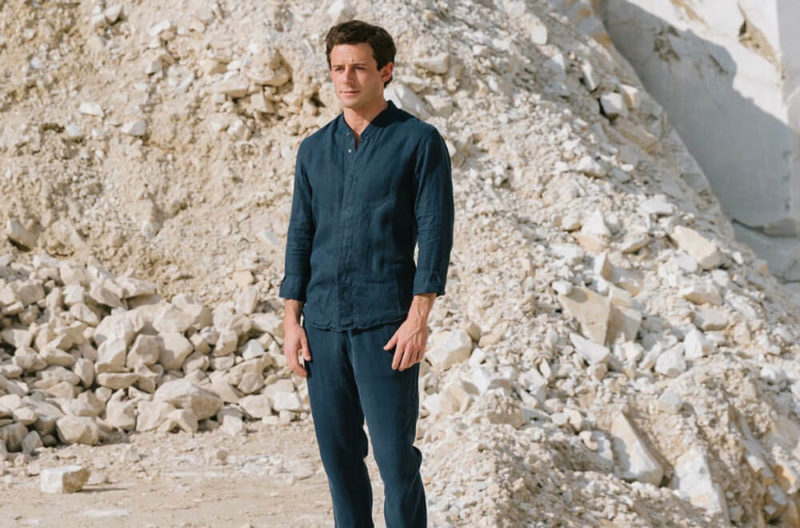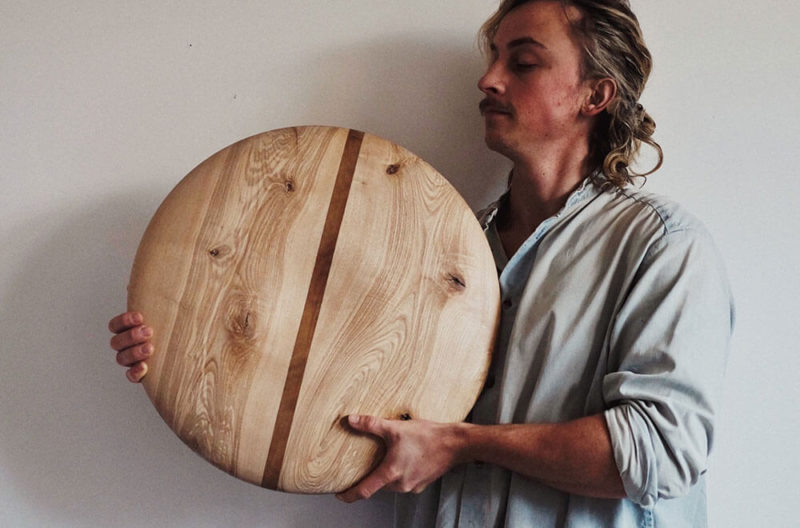Wesley Sacardi
"I was looking for a way out of my career in advertising and a way to revive the creative spirit I had fostered as a child – I wanted to work with my hands again."
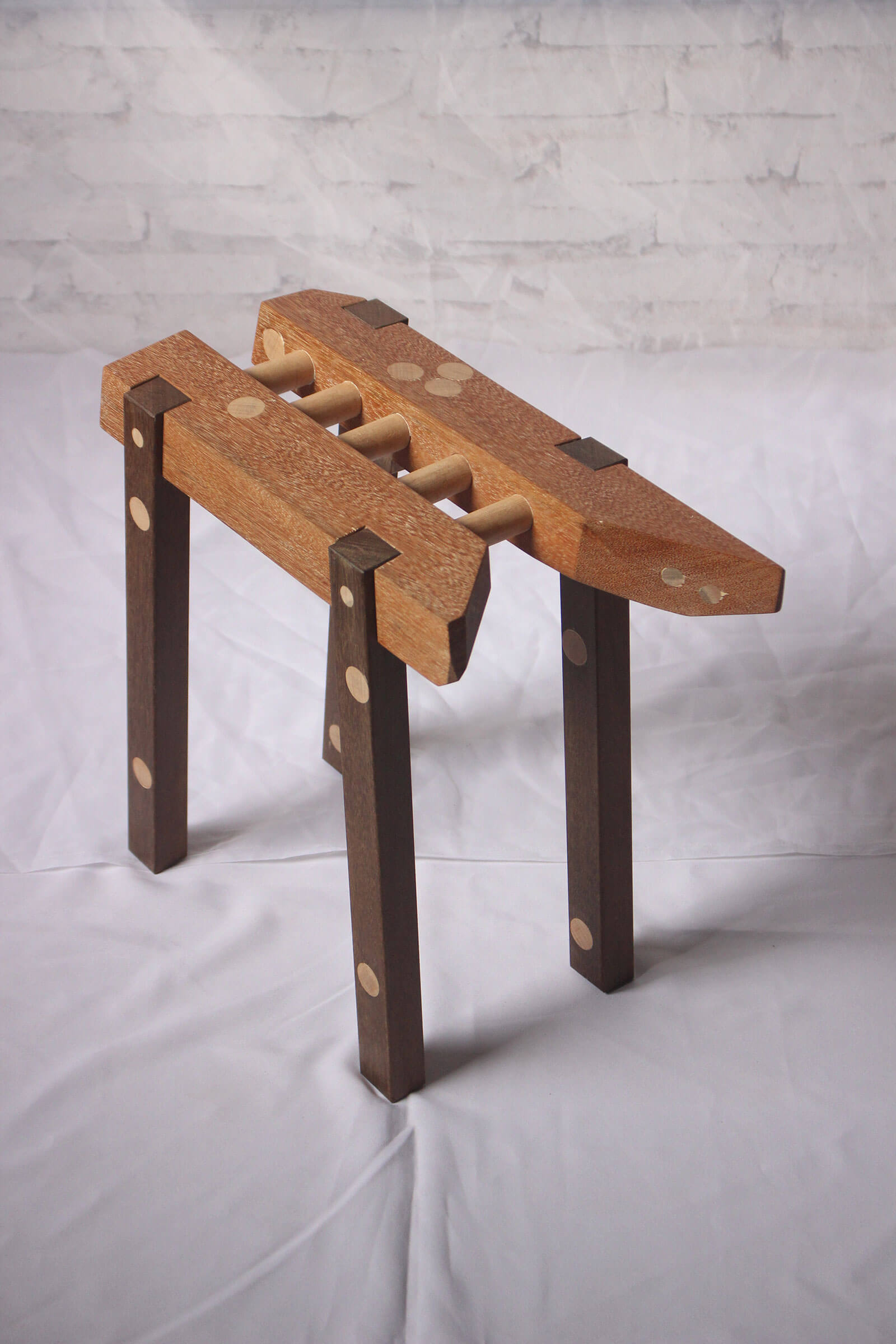
Wesley Sacardi, ‘Banco Infinito’, 2021
COURTESY: Wesley Sacardi
COMMUNICATIONS SPECIALIST TURNED self-taught artisan, Italo-Brazilian talent Wesley Sacardi has a particularly metaphysical connection to wood. The medium not only provides him with tangible means of exploring different techniques and forms, but provides a way of conveying meaning. He also has an irreverence for the excesses of mass consumption, which he expresses powerfully through his work.
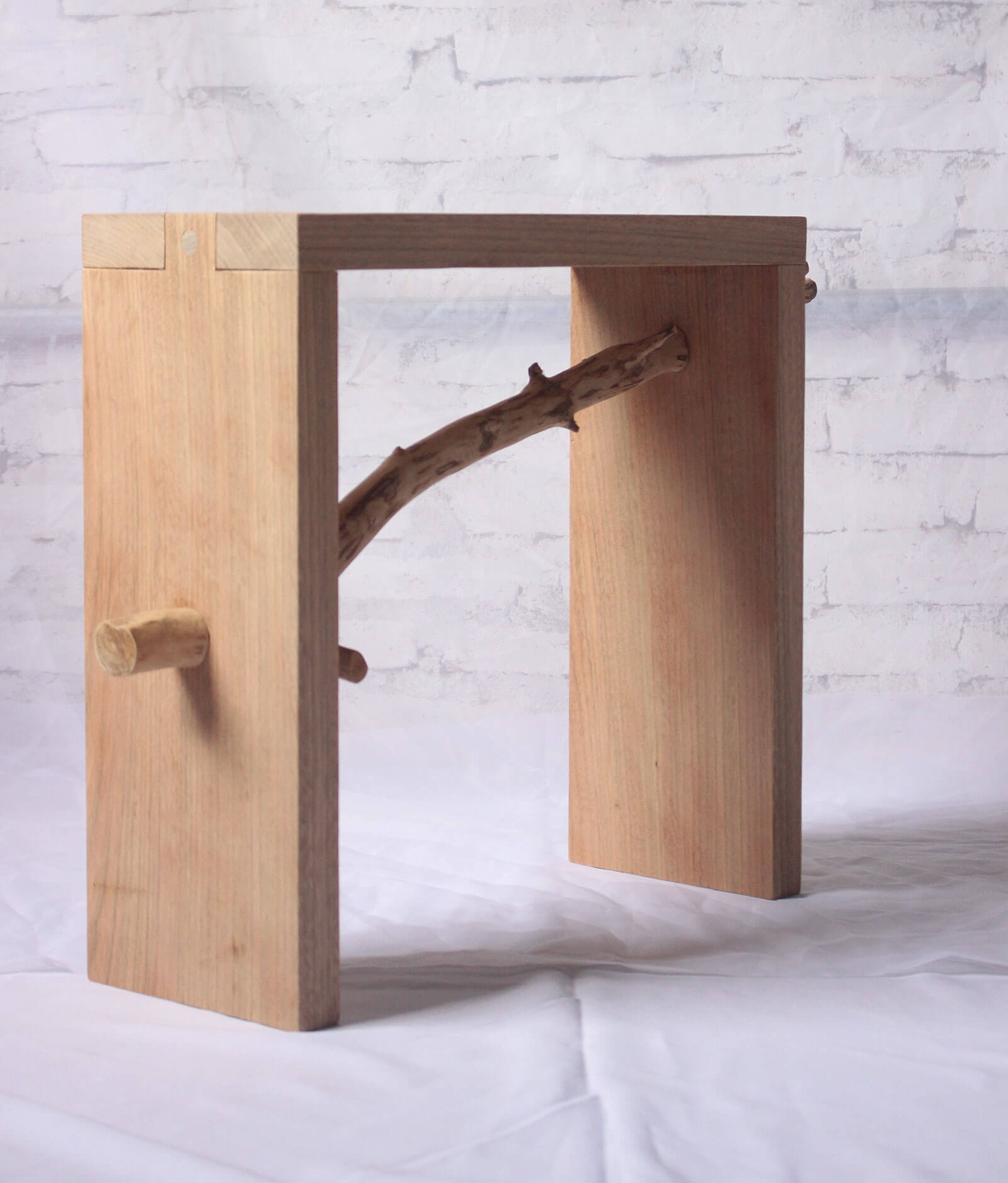
Wesley Sacardi, ‘Banco Travessia’, 2021
COURTESY: Wesley Sacardi
His iterative ‘Descartes’ collection is currently on view virtually through Lisbon’s Luka Gallery and is featured on the set of new Brazilian TV show ‘Cook Island – Ilha do Sabor’. Throughout this series, Sacardi masterfully pairs elements of discarded and raw wood in jarring yet visceral juxtapositions. Produced to be durable heirloom pieces, the various pieces are meant to elicit an initial sense of discomfort, before ultimately inspiring awareness about the reality of material waste – as well as the sociological complexities of social and cultural disposal.
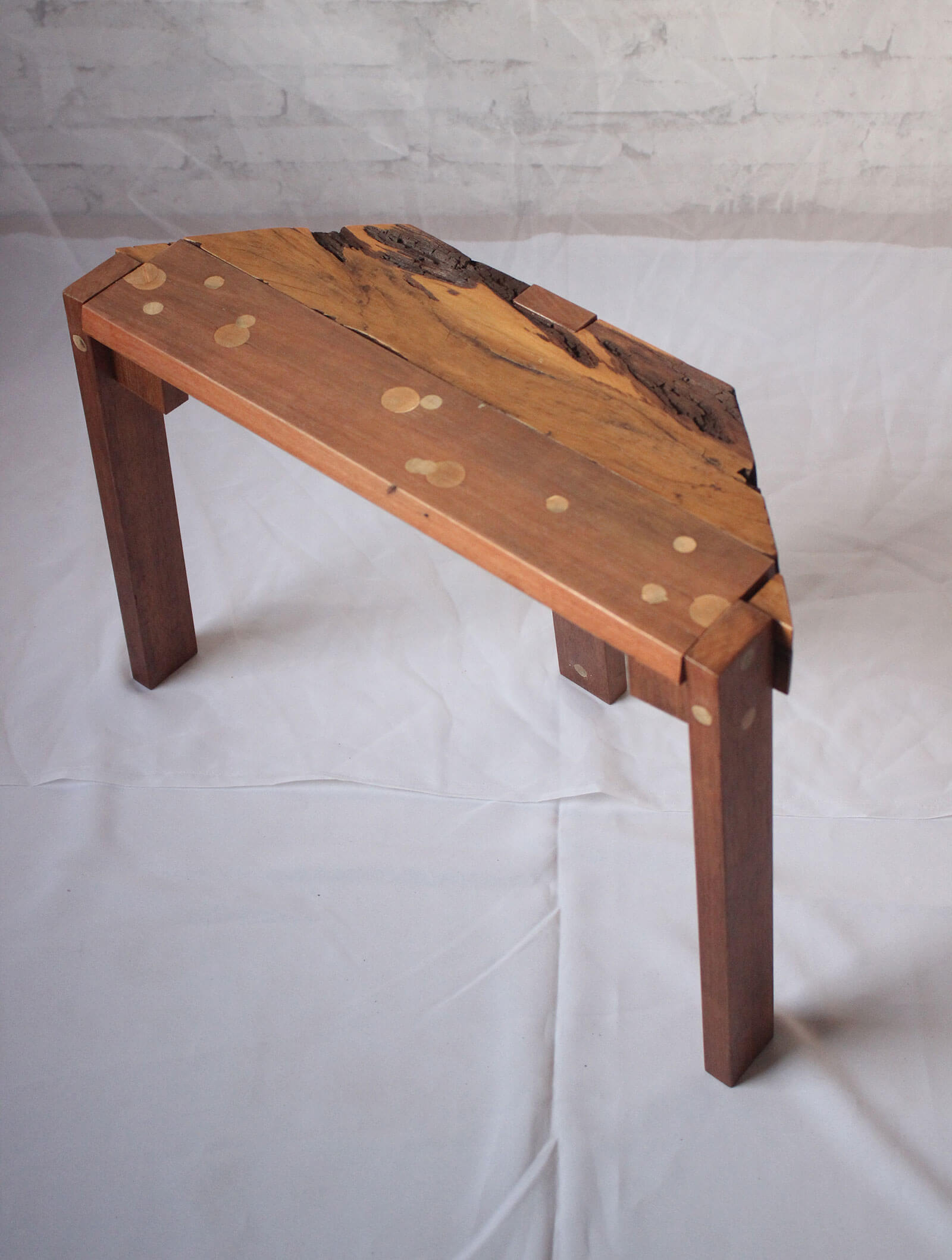
Wesley Sacardi, ‘Banco Confronto’, 2021
COURTESY: Wesley Sacardi
Sacardi is part of noted Sao Paolo-based design journalist Zizi Carderari’s ‘The Sertões initiative’, aiming to survey Brazilian handicrafts and encourage their use in contemporary decor. The Design Edit recently spoke to the Portugal-based artist about his unique practice.
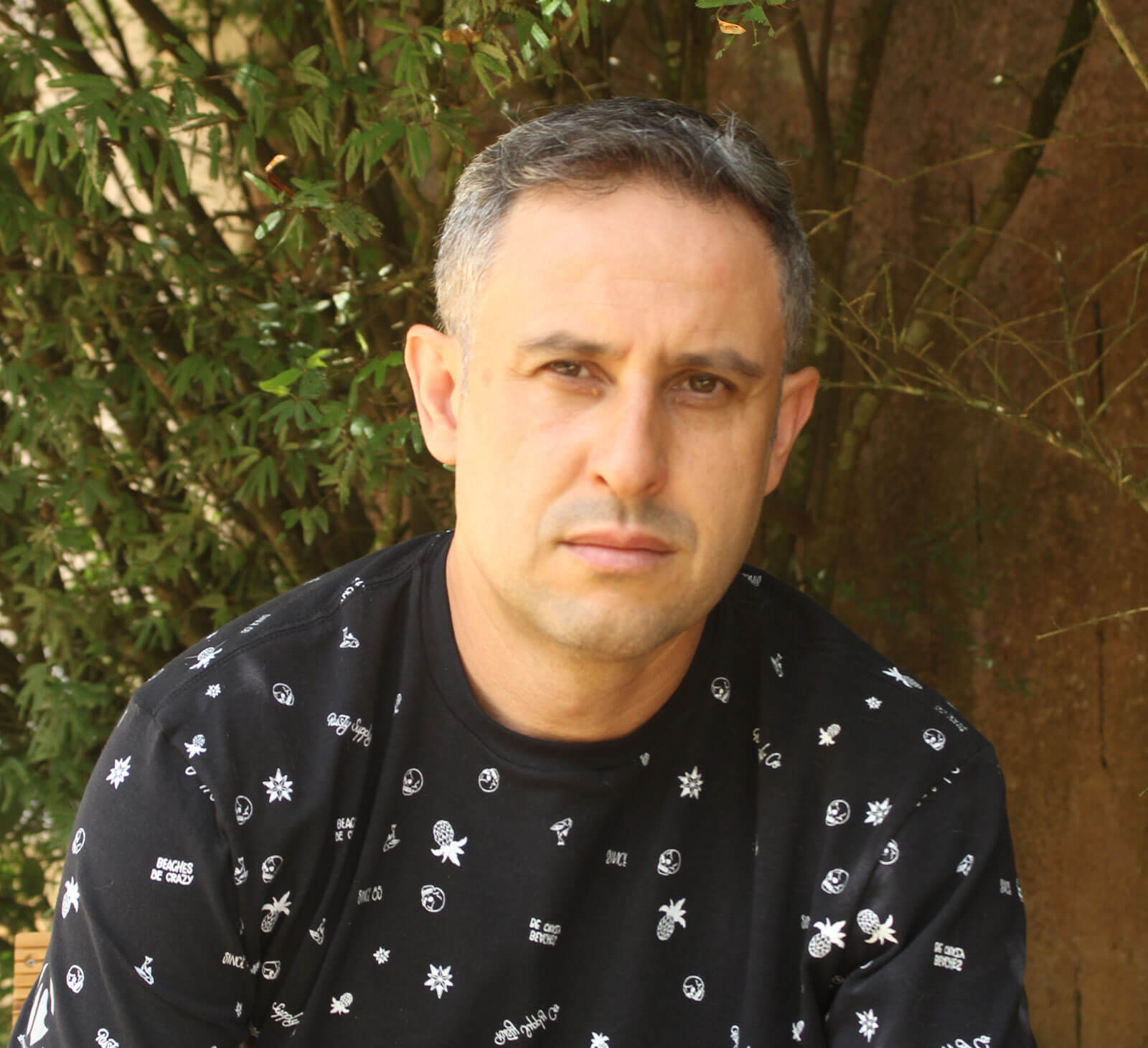
The Design Edit (TDE): Tell us about your background. What inspired you to transition from a role in communications to craft?
Wesley Sacardi: I was looking for a way out of my career in advertising and a way to revive the creative spirit I had fostered as a child. My role as a publicist was already fulfilled and I wanted to work with my hands again. It just so happened that my previous career dealt with machinery. This offered me the perfect foray into making. I was always interested in exploring how I could positively impact people’s lives, but never found the right avenue to do so. Creating furniture and decorative pieces has allowed me to accomplish this goal with much love.
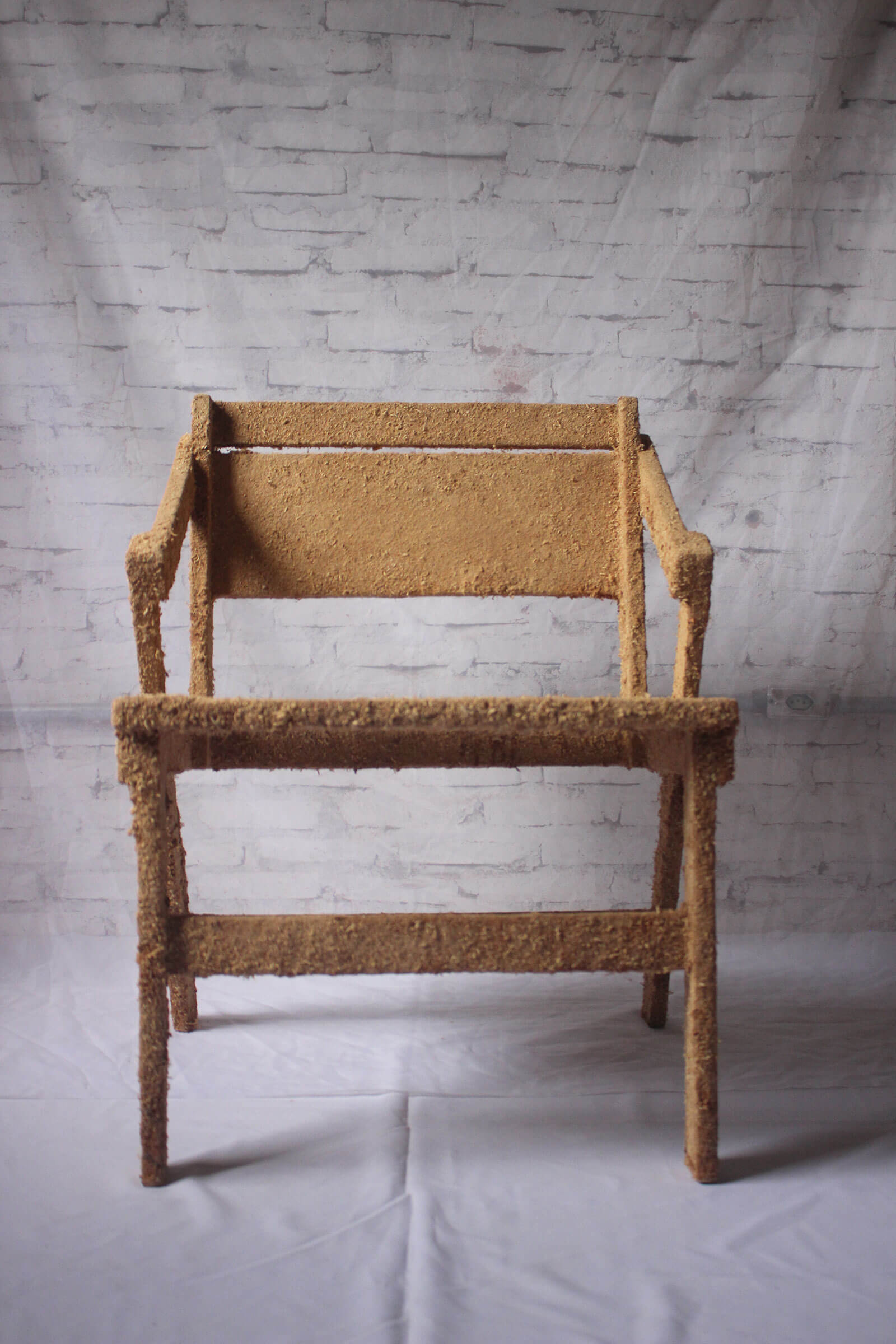
Wesley Sacardi, ‘Cadeira Serragem’, 2021
COURTESY: Wesley Sacardi
TDE: What is it about wood that fascinates you the most?
Wesley Sacardi: The material provides me with the chance to enact significant transformations and provides the challenge of creating something new without limitations. I often start creating when I first come into contact with raw material and allow it to intuitively guide my assembly process. Seeing the wood mutate is the most rewarding part of the process. I enjoy deconstructing the visual pattern of recognised objects to highlight specific tactile qualities like texture. Ultimately, I look to create balance and harmony between the different components.
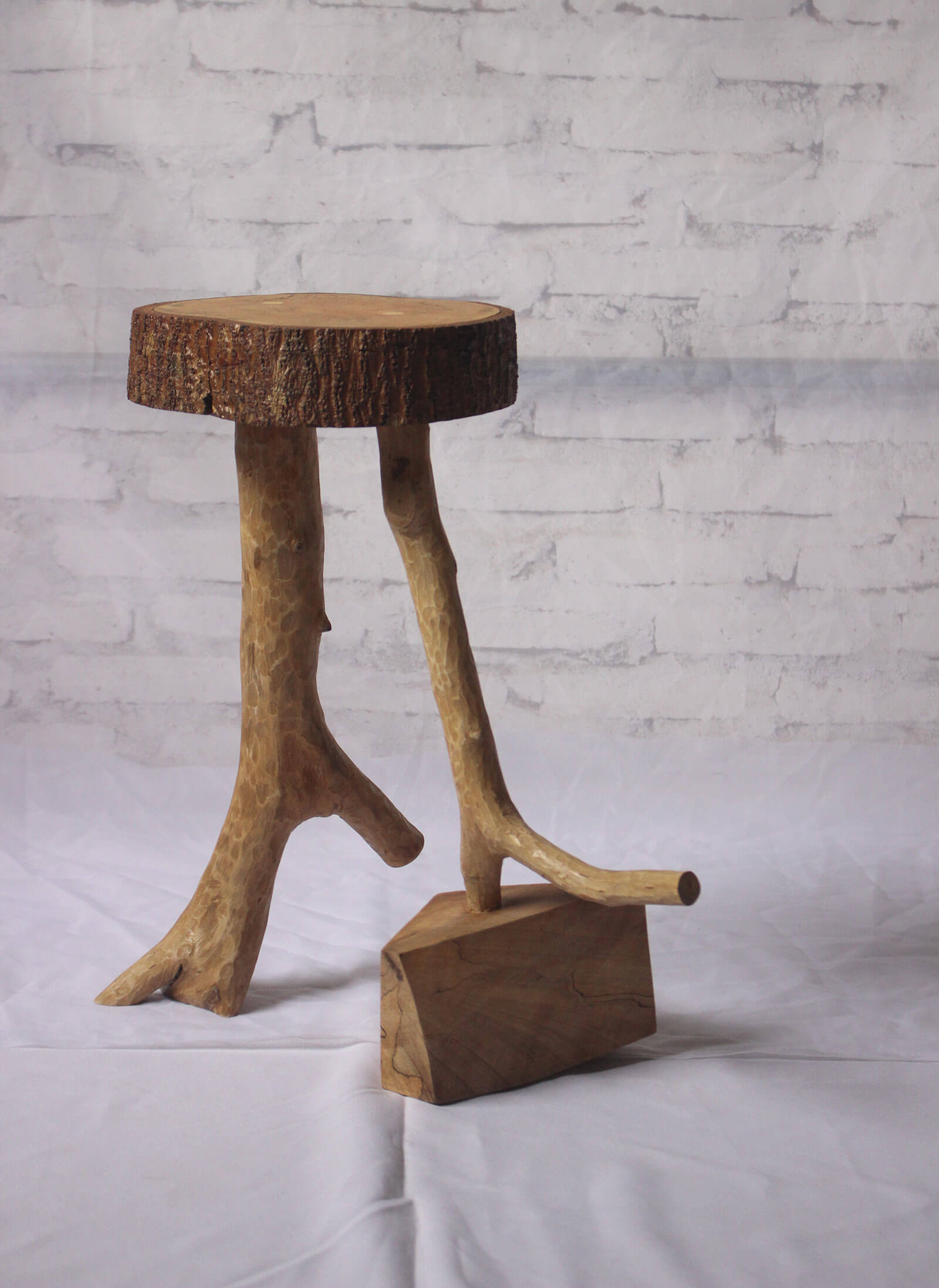
Wesley Sacardi, ‘Banco DesequilÃbrio’, 2021
COURTESY: Wesley Sacardi
TDE: How in various iterations of the ongoing ‘Descartes’ series do you explore the formal and functional parameters of furniture?
Wesley Sacardi: When I started the ‘Descartes’ series, I tried to go beyond functionality to arouse desire, curiosity and convey meaning – to create pieces that could be both decorative and useful. Arriving at the shapes, like chairs, came from what I observed as already existing. These archetypes and their functionality are a tool I use to bring people in to communicate a larger message. I’m particularly drawn to stools as they are pieces that you naturally share with other people. They circulate around the house. I like to imagine that furniture has to create an identity within these spaces, generating a visual and affective memory for its inhabitants.
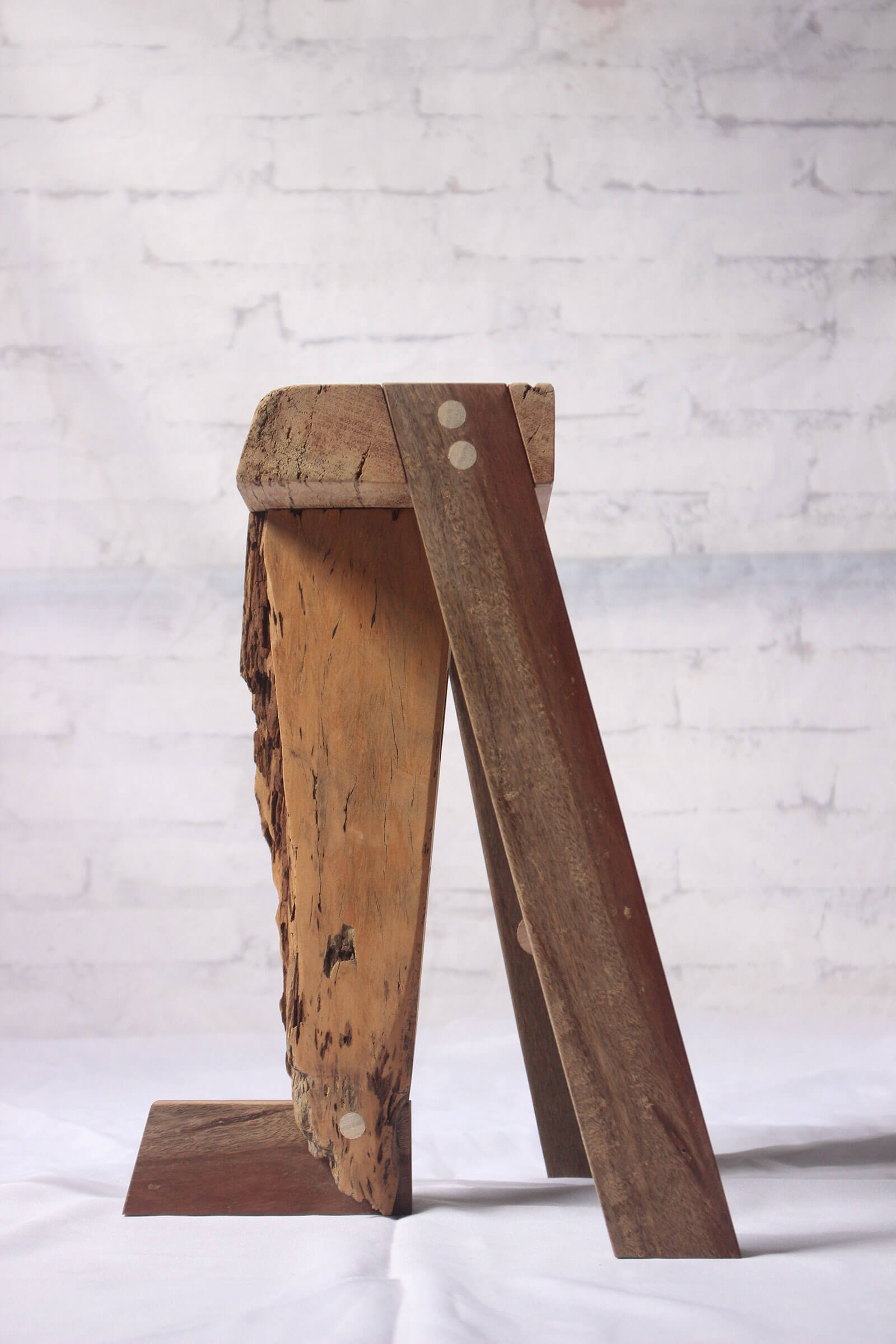
Wesley Sacardi, ‘Banco Caminho’, 2021
COURTESY: Wesley Sacardi
“I allow the raw material to intuitively guide my assembly process. Seeing the wood mutate is the most rewarding part of the process”
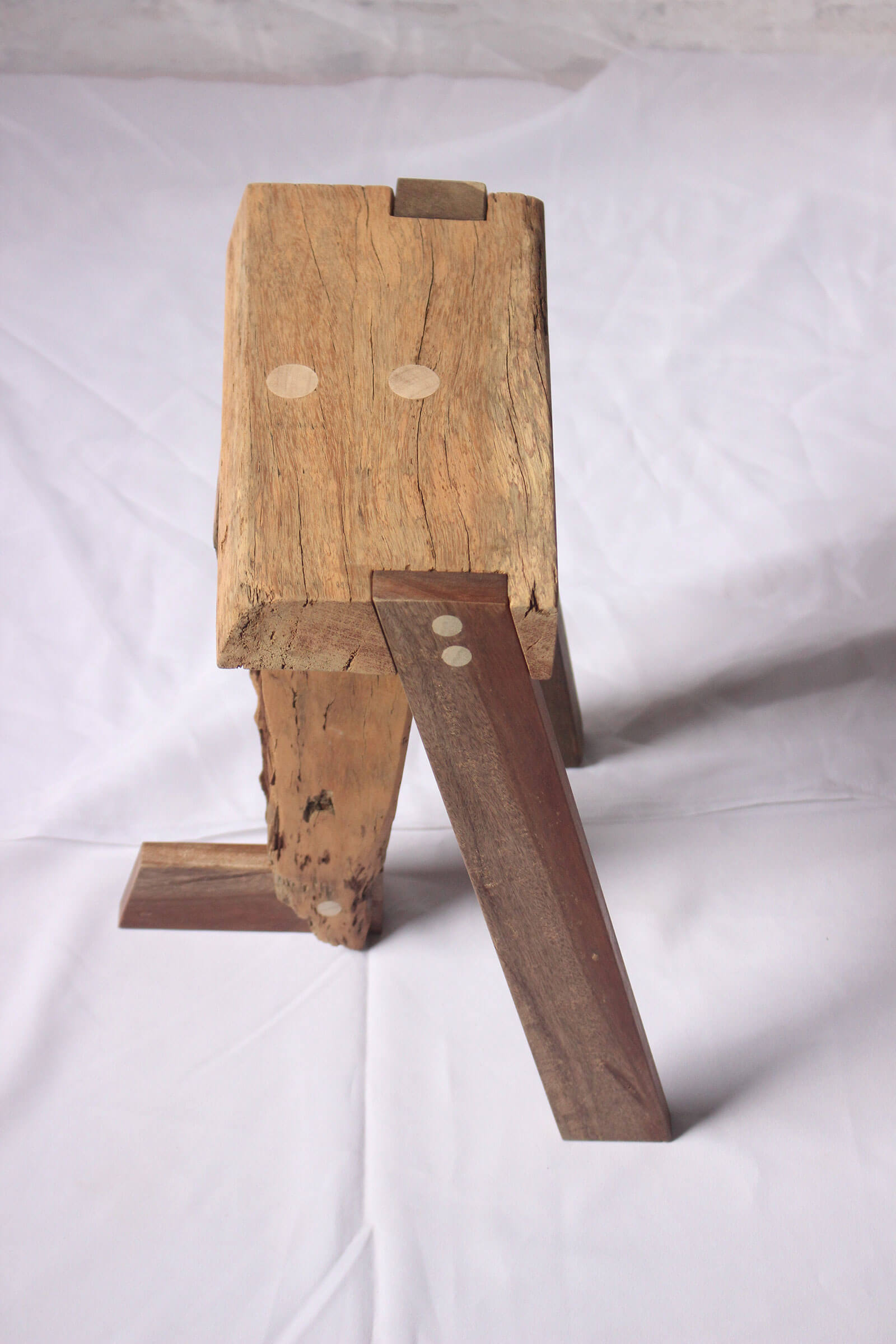
Wesley Sacardi, ‘Banco Caminho’, 2021
COURTESY: Wesley Sacardi
“I enjoy deconstructing the visual pattern of recognised objects to highlight specific tactile qualities like texture”
TDE: Talk about how Nordic, Wabi-sabi, and Boho references come into play in your work. What inspires you?
Wesley Sacardi: I collect observations of everything from architecture to paintings and tap into this memory bank when embarking on a new project. While the light wood tones and the straight lines of some of my pieces are inspired by Nordic design, the Wabi-sabi philosophy emerges in highlighted imperfections. For me, the idea of Boho style is an expression of freedom. These three styles come together in works like a three-metre-long table that has a rectilinear base, organic edge top, and central 2cm division that denotes a level of flexibility. While some pieces are minimal, others feature unadulterated tree branches.
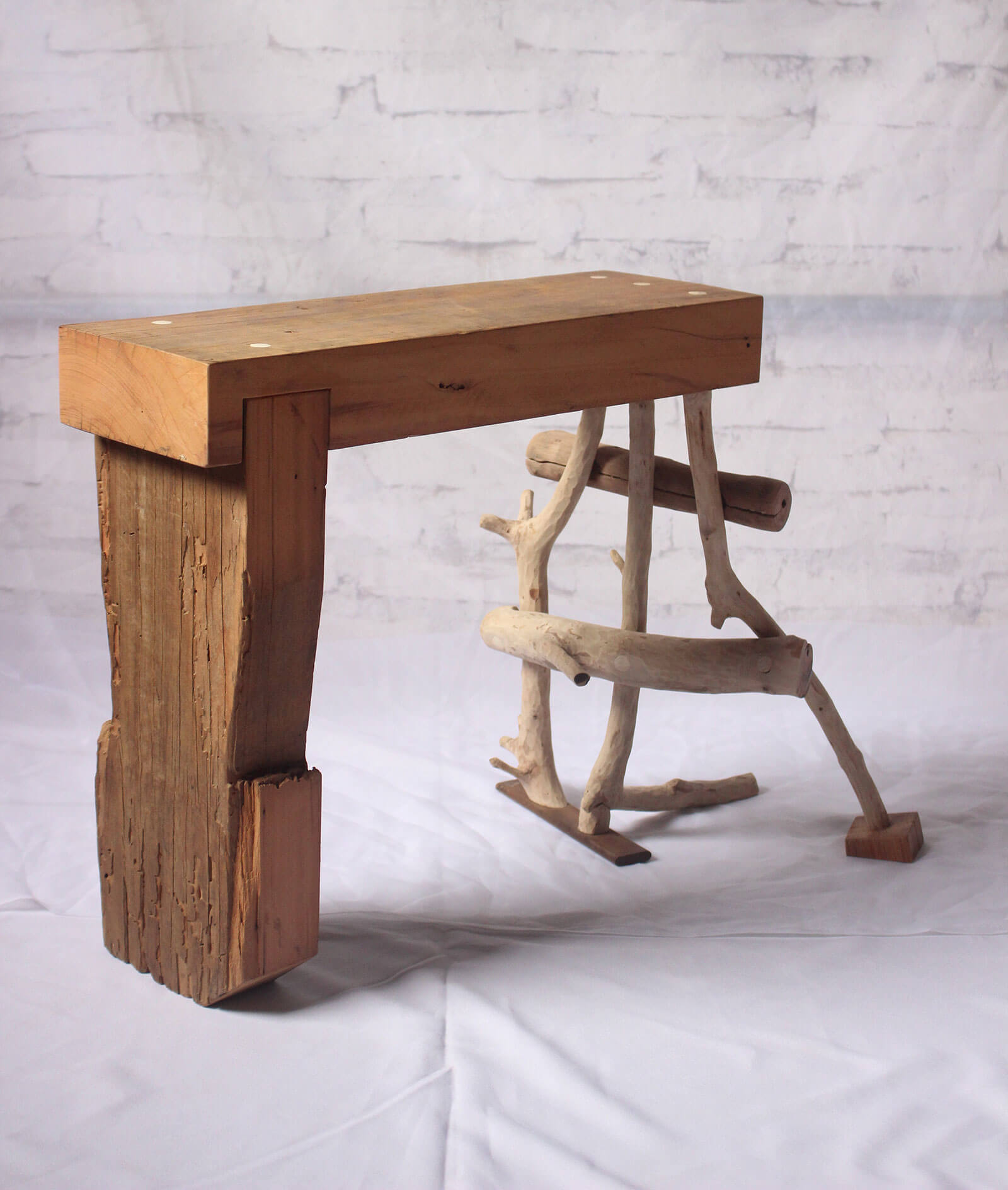
Wesley Sacardi, ‘Banco InÃcio’, 2021
COURTESY: Wesley Sacardi
TDE: What’s next for you?
Wesley Sacardi: I’m currently operating out of Loulé, a small city in Portugal’s Algarve region, and plan to eventually set up a permanent workshop here. I’m hoping to continue the series but also explore new partnerships.
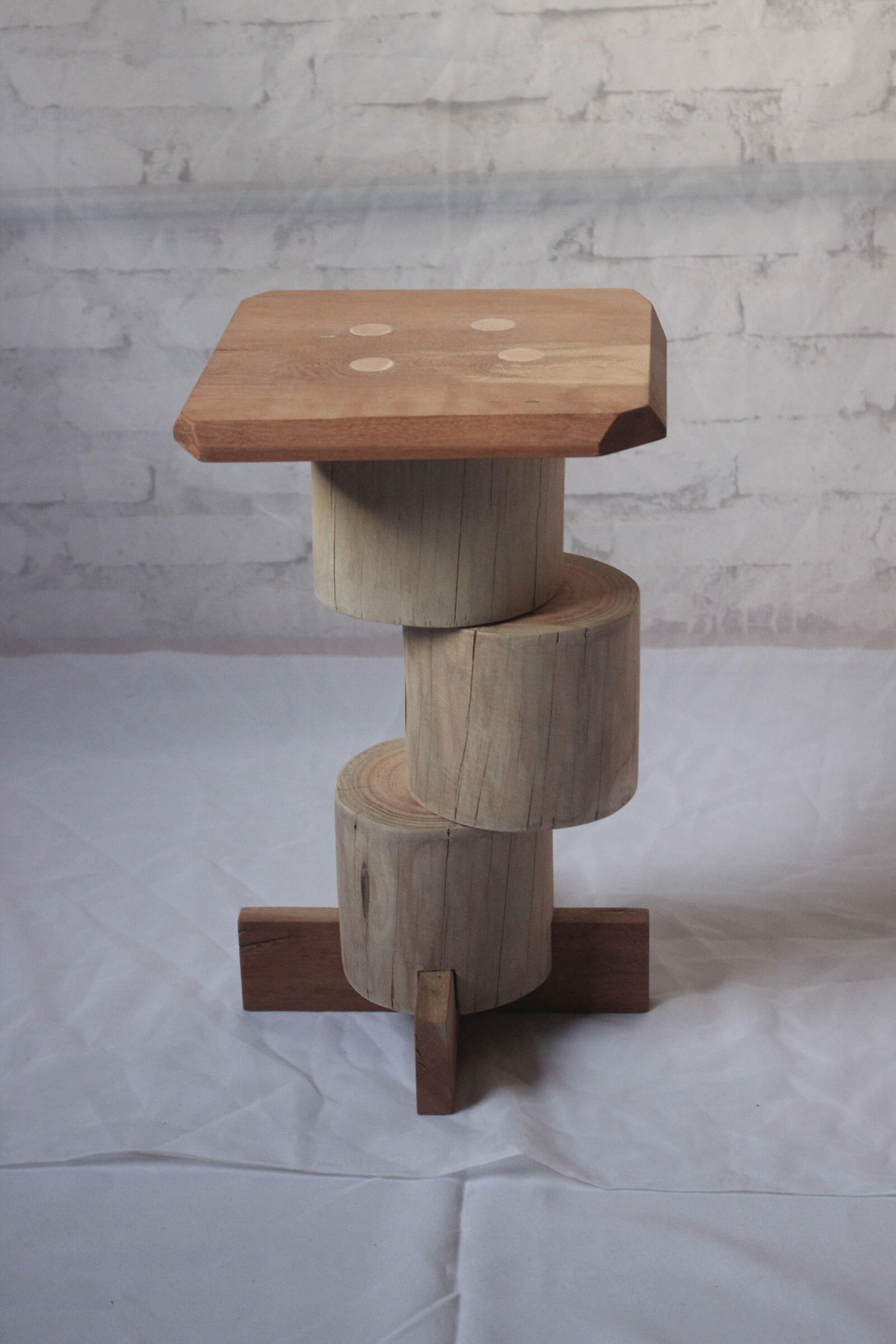
Wesley Sacardi, ‘Banco Engrenagens’, 2021
COURTESY: Wesley Sacardi
Luka Gallery, Lisbon.




